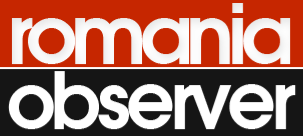The low energy efficiency of buildings is a key factor in energy poverty, and households most exposed to severe forms of energy poverty live in dwellings built from materials such as wood and timber-framed mud brick, according to data from the 2024 Annual Report published on Friday by the Romanian Energy Poverty Observatory (ORSE).The analysis highlights the direct link between the type of construction and the various manifestations of energy poverty. According to the data, almost 40% of households in extreme energy poverty live in wooden houses, and over a third of those below the critical energy poverty threshold live in timber-framed mud brick houses."Over 85% of these homes are located in rural areas, where construction practices and lack of regulations contribute to perpetuating energy vulnerability," the report says.According to the cited source, inefficient consumption, caused by poor thermal insulation, old heating systems, or inadequate equipment, leads to high bills and the inability to ensure minimum comfort. In addition, lack of access to secure and affordable energy sources - for geographical or financial reasons - exacerbates vulnerability. In most cases, affected households face multiple risk factors simultaneously, requiring complex interventions tailored to each individual case."The quality of housing and the materials used to build houses play a key role in the risk of energy poverty. Public policies must directly target the rehabilitation of these homes through dedicated funds and efficiency programs adapted to rural areas. Of course, a targeted approach is needed to understand the needs of each individual case. The role of local public administrations under the coordination of one-stop shops is fundamental," emphasizes Anca Sinea, ORSE coordinator, quoted in the press release.According to the report, although extreme forms of energy poverty are prevalent in rural areas, urban areas are not immune to risks either. Among households facing high energy consumption and increased financial strain to cover bills, many live in dwellings built of concrete slabs, brick, or autoclaved aerated concrete (AAC), which are particularly prevalent in cities.Thus, more than one-third of households that allocate more than 10% of their income to energy costs live in buildings made of stone, brick, or autoclaved aerated concrete. Almost one-quarter of households with high energy consumption, more than double the national median (indicator 2M), live in the same type of buildings. At the same time, almost two in ten (19.3%) households with excessive consumption live in dwellings built of precast concrete.With regard to households falling below the poverty line after paying for energy (LIHC indicator), those most at risk are those living in houses made of mud bricks or similar materials (18.7%).This data reflects the fact that energy poverty is closely linked to the condition of housing, its energy efficiency, household income, the residential environment, and other individual factors, for which granular and complex data is needed. Integrated measures are needed that target not only financial assistance but also the modernization of the housing stock, especially in vulnerable areas, according to ORSE experts."The quality of housing is, as the data indicates, an important cause of energy poverty. Designing public policies based solely on social criteria is not only insufficient, but also incorrect. An effective approach means intervening where the risks are highest. Our recommendation is that remedial measures (energy efficiency, sustainable energy) should focus on access to resources in communities - in rural areas and small urban areas, where these problems are most visible but where, until now, measures have been the fewest," added Anca Sinea.ORSE also makes a series of recommendations, including the implementation of a national program to support the thermal rehabilitation of rural housing, including thermal insulation, replacement of windows and doors, and modernization of heating systems, as well as free energy audits for rural households to identify energy saving opportunities and recommend energy efficiency measures.Other recommendations relate to granting low-interest loans for investments in energy efficiency and renewable energy projects, tax breaks for rural households and businesses that invest in clean energy technologies and thermal rehabilitation of buildings, as well as subsidizing or co-financing the installation of photovoltaic panels and other renewable sources, with priority given to vulnerable and isolated households, and creating a simplified framework and support schemes for the establishment of local energy communities, which would enable the production and sharing of clean energy at the village and commune level.ORSE also proposes launching national information campaigns to educate the rural population about the benefits and methods of using renewable energy sources and energy efficiency measures, as well as developing vocational training programs to create a skilled workforce in the installation and maintenance of renewable energy systems.Four main conventional indicators were used to measure energy poverty, with the ORSE analysis based on data from the Household Budget Survey (ABF 2023) conducted by the National Institute of Statistics: the "10%" indicator (households allocating more than 10% of their income to energy); the M/2 indicator (the most severe indicator - consumption below the national median due to lack of resources); LIHC (falling below the poverty line after paying for energy); 2M (overconsumption due to energy inefficiency). (Photo:https://saracie-energetica.ro/)

